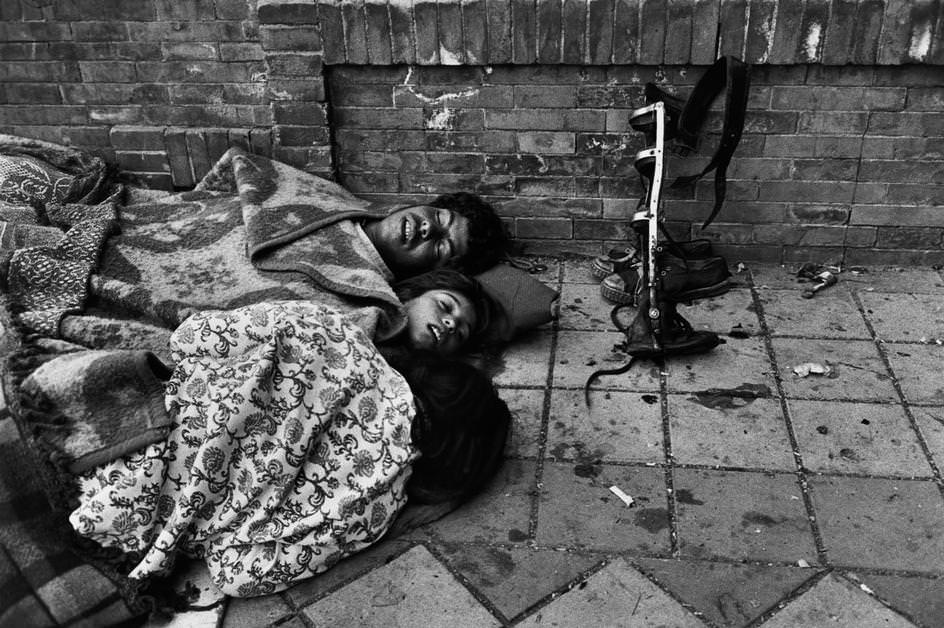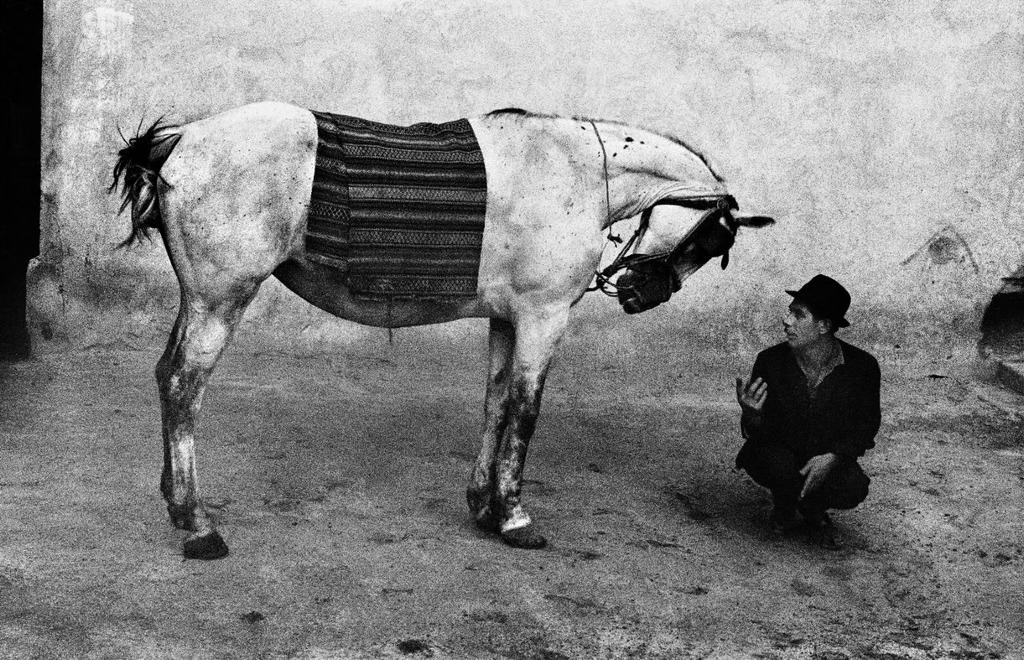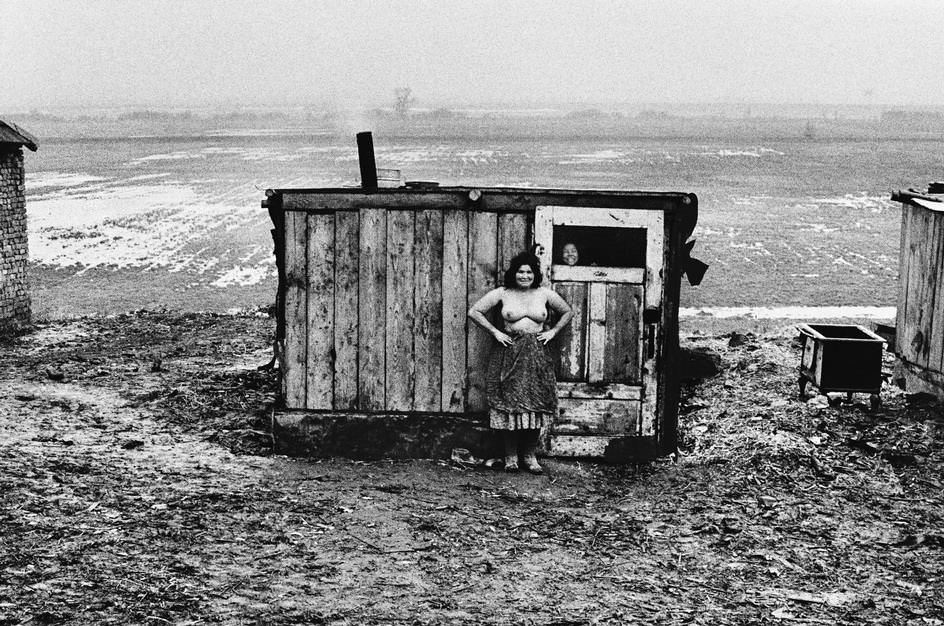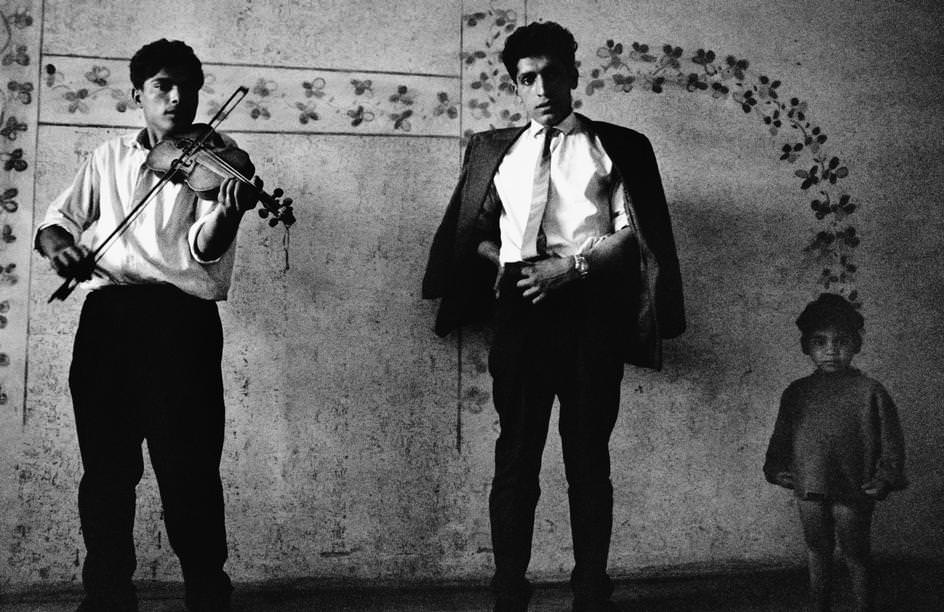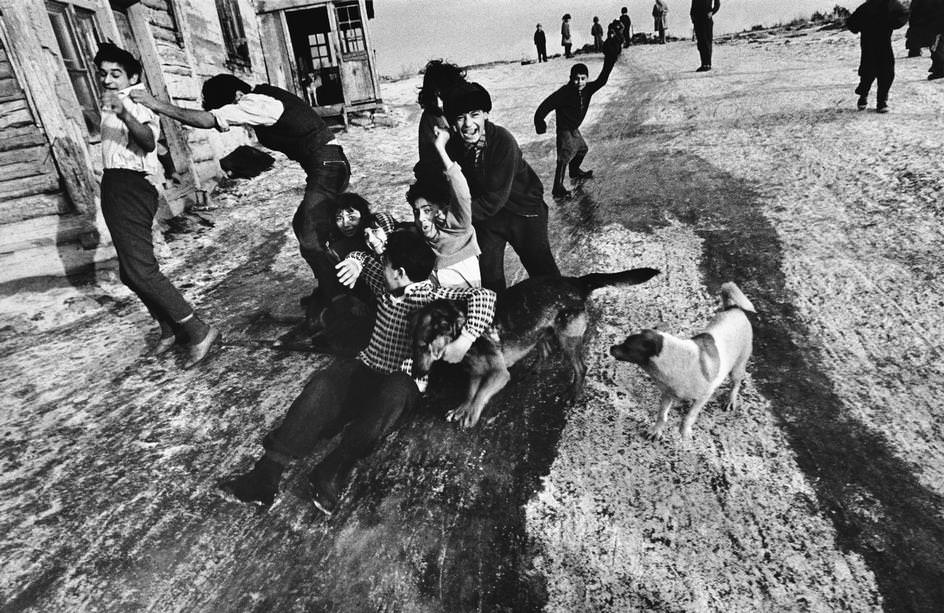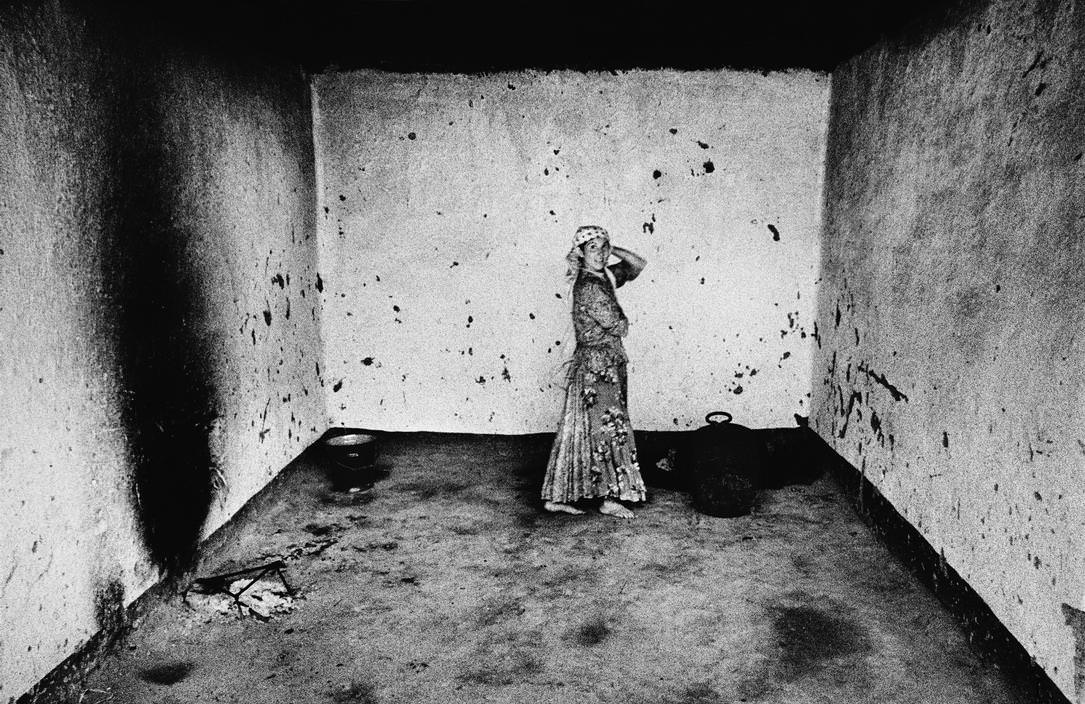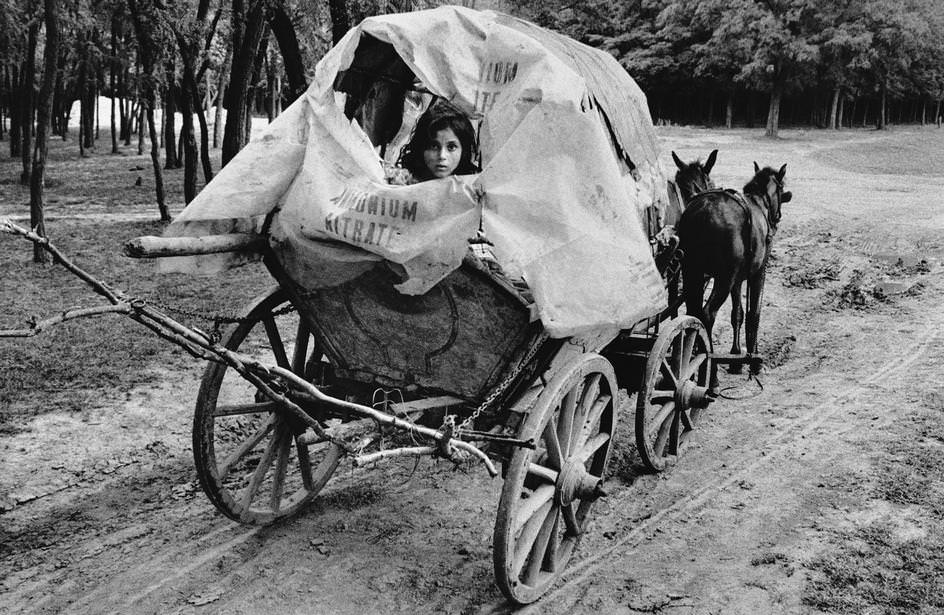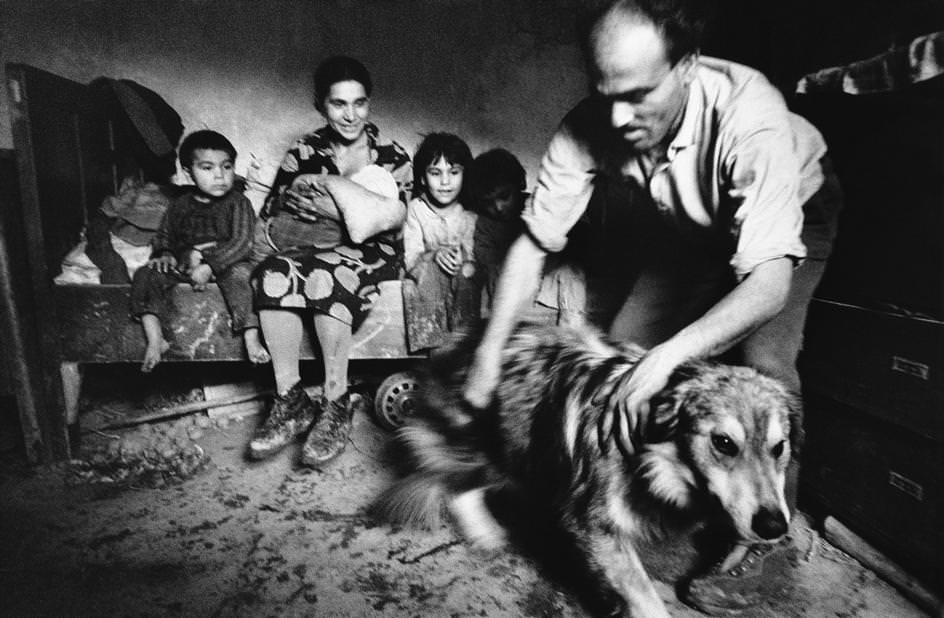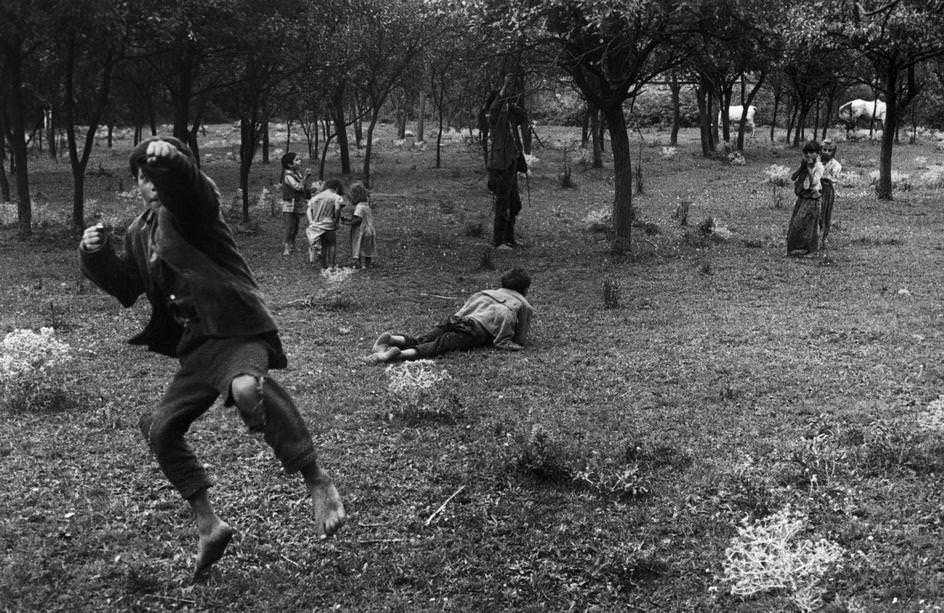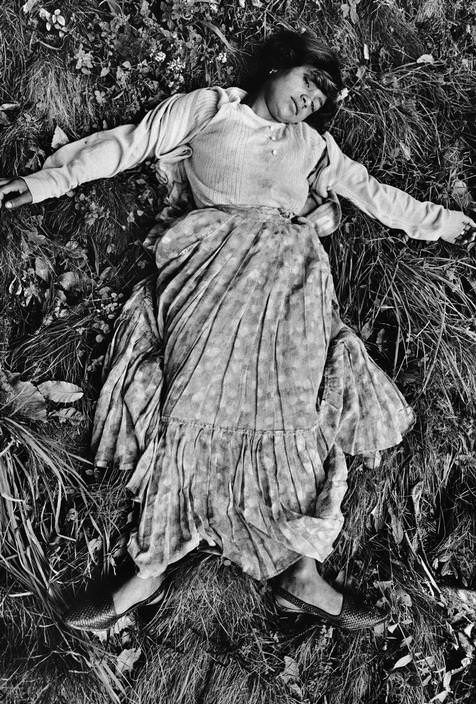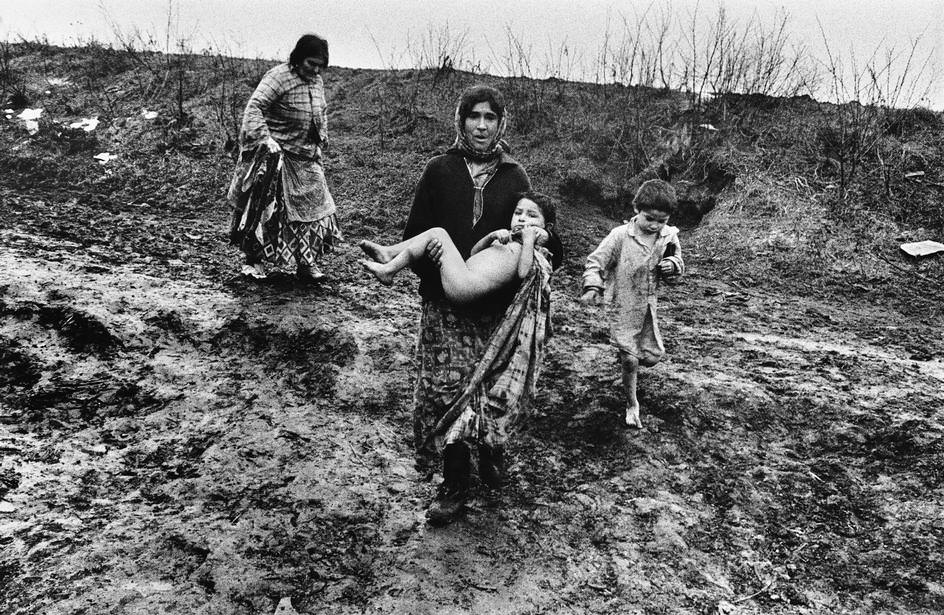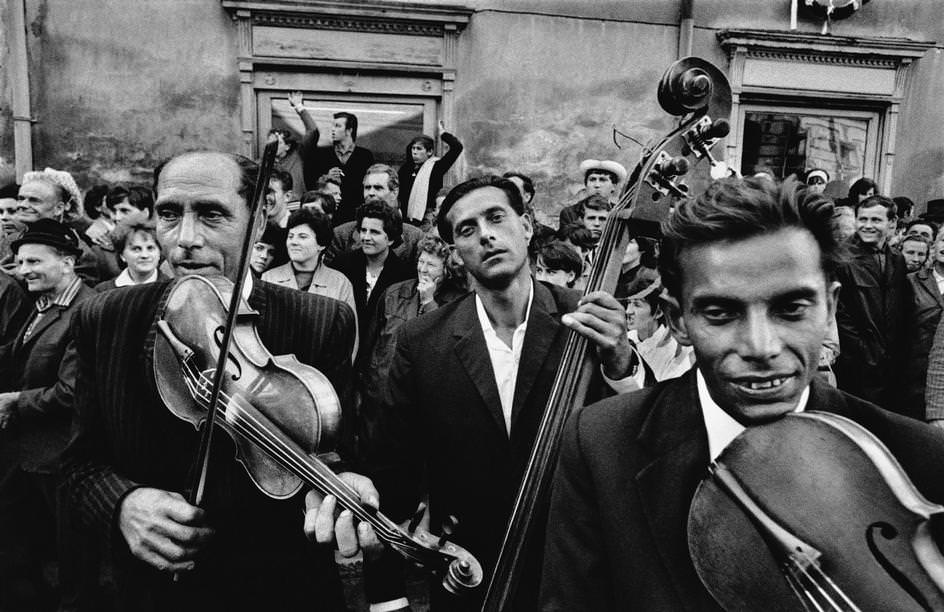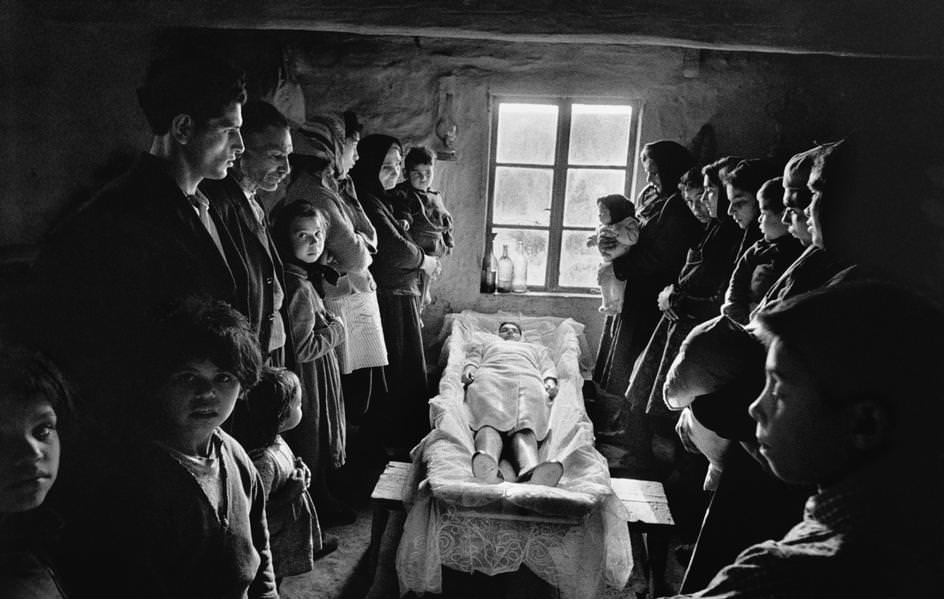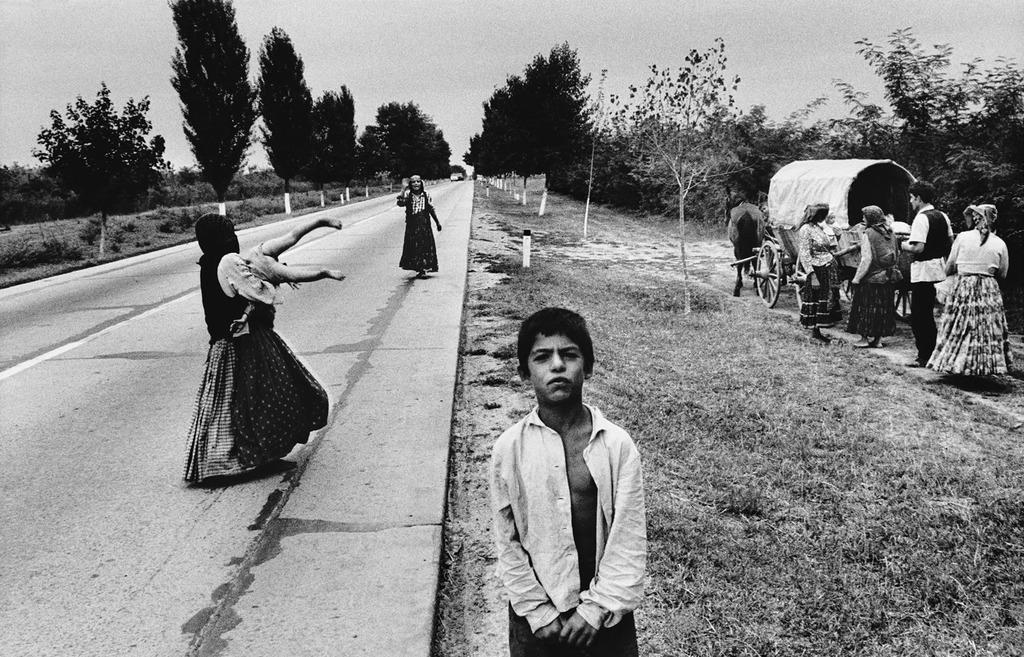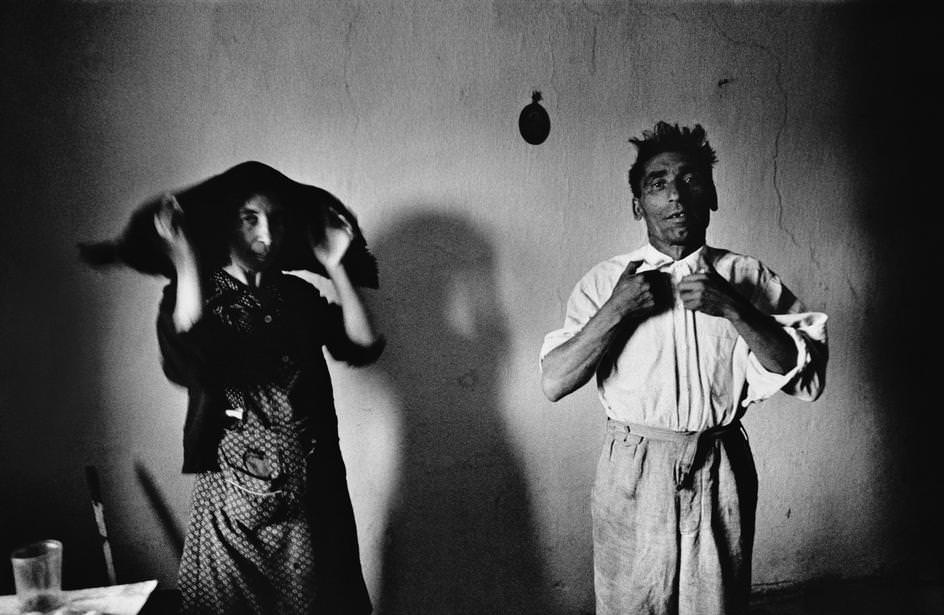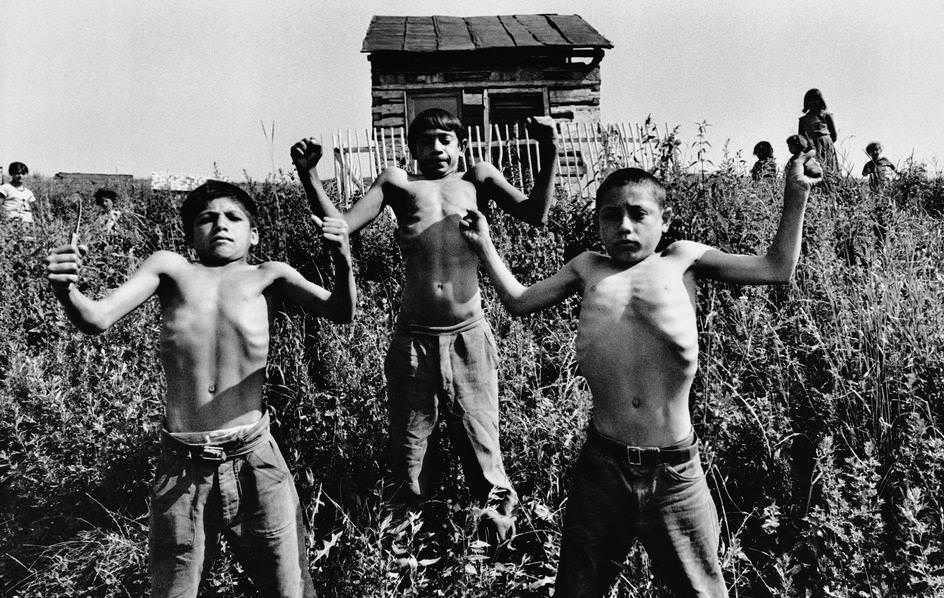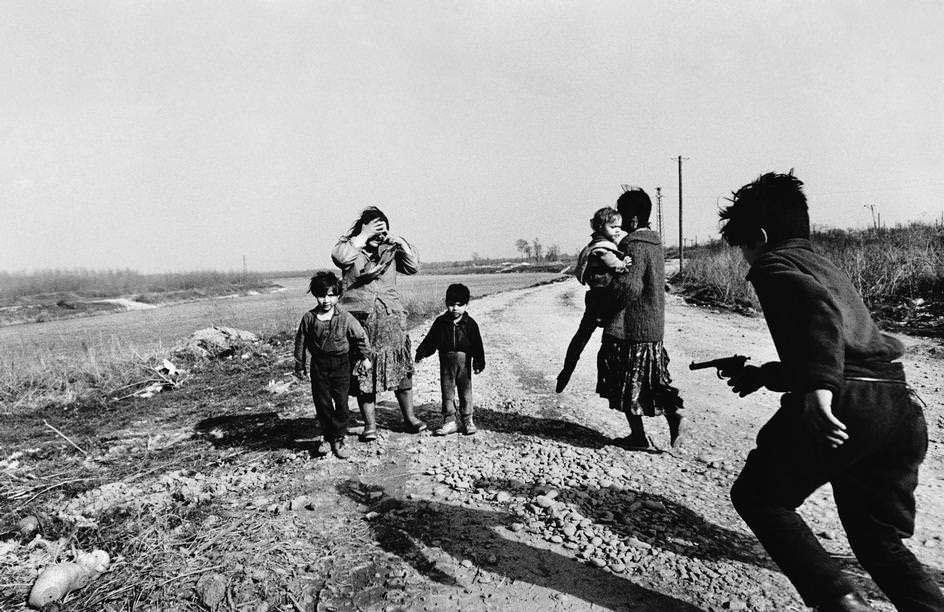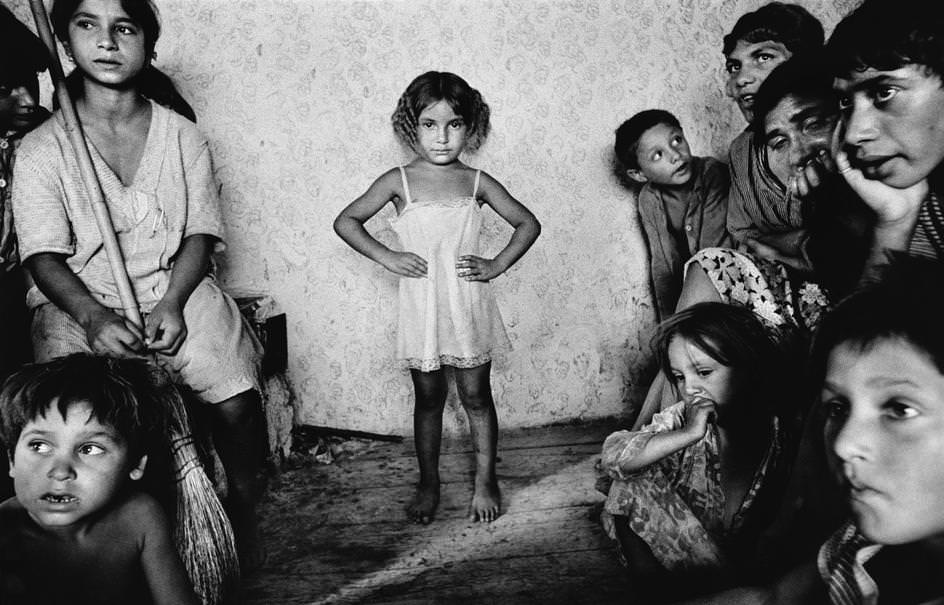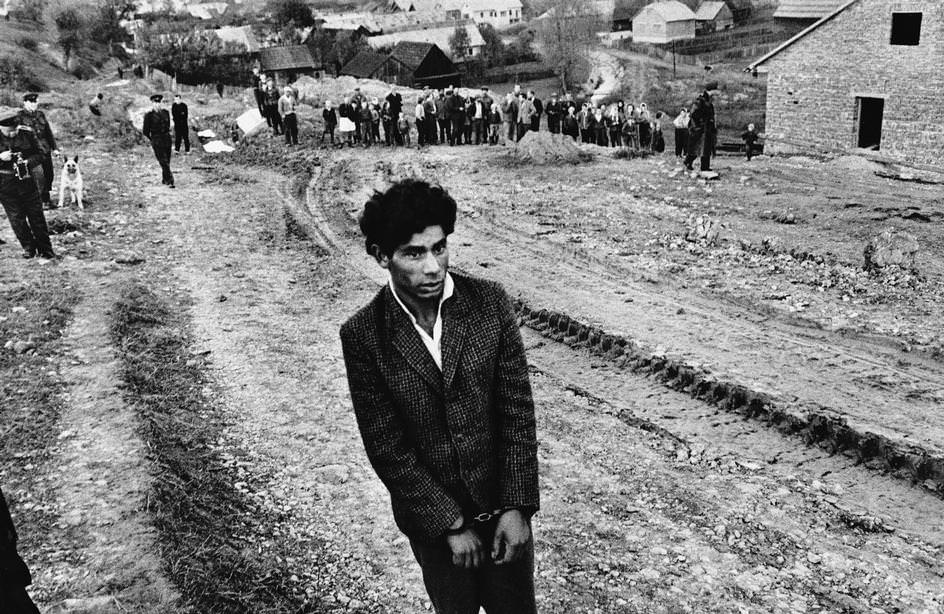Between the 1960s and 1970s, the lives of Romani Gypsies were captured in a series of striking black-and-white photographs by Josef Koudelka. Traveling through Czechoslovakia, Romania, Hungary, France, and Spain, Koudelka immersed himself in their world, drawn by their nomadic lifestyle, unique customs, and expressive faces. He spent summers on the road, sleeping outdoors with little more than a rucksack and a sleeping bag. The Romani people, known for their deep connection to their traditions and their transient way of life, referred to Koudelka as the “romantico clandestino,” or “romantic wanderer.”
Koudelka’s photos from this period offer a glimpse into a way of life that was fading but still held onto its roots. The Romani, or Gypsies as they are often called, were a nomadic people, moving from place to place in caravans, living off the land, and making a living through trades like metalworking, horse trading, or performing arts. Their homes were often colorful wagons or simple tents, and their families traveled in tight-knit groups. Despite the hardships of constant movement, many of Koudelka’s photos show moments of joy, celebration, and togetherness.
The Romani people had a long history of being misunderstood and marginalized by society. They were often seen as outsiders wherever they went, and their lifestyle didn’t fit into the structured, settled world around them. This tension between the romantic idea of their freedom and the reality of their struggles is something Koudelka captured in his work. His images show both the beauty and the difficulties of their existence. In the photographs, you see children playing in the dirt, families gathered around campfires, and elders with weathered faces telling stories of the past. But you also see the worn clothes, the makeshift homes, and the signs of a life lived on the edge of society.
Read more
One of the most striking aspects of Koudelka’s photography from this period is the way he captured the Romani’s deep connection to their traditions. Weddings, funerals, and religious rituals are common subjects in his work. These moments of life and death were celebrated with music, dance, and prayer, often in the open air, surrounded by the natural world. The Romani people had a strong sense of community, and these events were shared by entire families and tribes. Koudelka’s photos show the importance of these gatherings, not only as markers of significant life events but also as a way for the Romani to maintain their cultural identity in a world that was constantly changing around them.
Another key theme in Koudelka’s work is the Romani’s relationship with nature. Living a nomadic life meant being in tune with the seasons and the land. The photos show people walking along dusty roads, setting up camp in fields, or resting under trees. Their caravans, often decorated with intricate designs, were more than just homes—they were symbols of their freedom and independence. The Romani’s connection to the land was both practical and spiritual, and Koudelka’s images reflect this duality. Their lifestyle required them to be resourceful, using what they could find in their environment to survive, but it also allowed them a sense of freedom that was hard to find in modern society.


